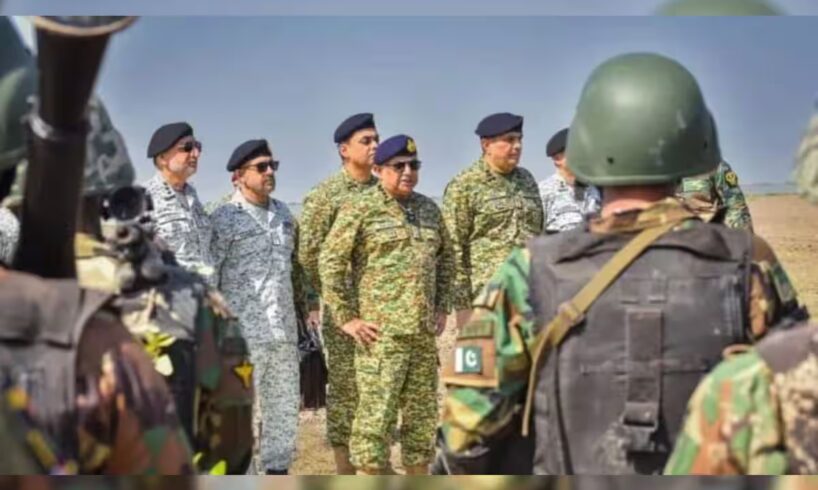
New Delhi: Pakistan has raised a new cause of concern for India after the country’s navy chief Admiral Naveed Ashraf travelled to the forward naval posts located inside the Sir Creek belt, a region that continues to remain disputed between both nations due to long-standing disagreements over the maritime boundary. The Creek region sits on a complex stretch of tidal channels, mudflats and coastal marshes that require constant monitoring by security forces from both sides.
The visit by Pakistan’s top naval commander to these frontline posts shows that Islamabad wants to display its military preparedness in the area and emphasises its long-standing claims there. Admiral Ashraf used the visit to speak about Pakistan’s intent. He declared that the Pakistan Navy planned to defend every part of the shoreline stretching from Sir Creek to Jiwani. His remarks illustrated a stronger interest in this coastal zone.
The Pakistan Navy added new equipment to its forces in the area. Admiral Ashraf oversaw the induction of three modern 2400 TD Hovercraft into the Pakistan Marines. These platforms bring navigation advantages across shallow waters, wet sand and marshy terrain. The terrain around Sir Creek often becomes impossible for regular boats to move through, and Pakistan expects these hovercraft to remain useful for patrols and troop movement in those waters and wetlands.
Add Zee News as a Preferred Source
The admiral explained that the new amphibious vessels signal Pakistan’s intent to improve the defence of its shoreline and the Creeks region. His message to officers and personnel placed focus on operational strength along the maritime edges that Pakistan sees as vital to its national security.
He also expressed the importance of maritime networks through the Sea Lines of Communication. He stated that these waters ensure economic activity and stability for Pakistan. His speech presented the naval presence as a responsibility that protects both the country’s coastline and its trade interests.
Admiral Ashraf described the Pakistan Navy as a force that aims to support peace and stability in the Indian Ocean Region. He said the hovercraft hold the capability to deliver an effective and decisive response against any opponent that challenges Pakistan’s interests in these coastal territories.
Sources within India’s security establishment have expressed serious concern over this high-profile visit. They interpret it as a deliberate attempt to display military activity inside a region where India and Pakistan have not resolved the territorial boundary. They say that the visit came just before the Indian Tri-Forces joint exercises, which gives the timing strategic attention.
Indian intelligence officials believe the objective behind Pakistan’s strong messaging consists of two elements. The first involves the desire to keep tension active over Sir Creek. The second focusses on portraying the issue to international actors as a matter that deserves global attention.
This reading views the public display of hovercraft deployment as a move that aims to draw interest from audiences outside the region.
Officials in New Delhi have also highlighted how this naval movement allows Pakistan to expand its ongoing cooperation with China. The forces positioned around Gwadar and Jiwani already support important projects under the China-Pakistan Economic Corridor (CPEC). The new induction of hovercraft fits into that wider framework. It allows Pakistan to say that security operations require further international partnerships connected to maritime infrastructure.
Indian analysts have said that these upgrades suit a defensive approach in shallow waters rather than planning for attacks at sea. The capabilities fit precisely with Sir Creek’s muddy banks and narrow inlets. The concern arises because such improvements build a stronger long-term military presence in a location where India disputes sovereignty.
Pakistan’s naval strategy around Sir Creek now looks more energetic and visible. India sees these actions as signs that the maritime boundary issue will remain firmly pressed on the regional agenda. The visit by the Pakistan Navy’s highest authority signals Islamabad’s intent to secure a larger stake in the ongoing dispute.





